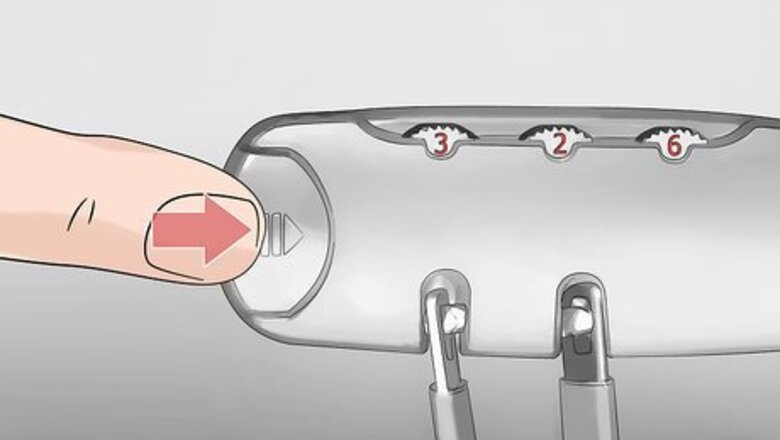
views
Listening to the Lock
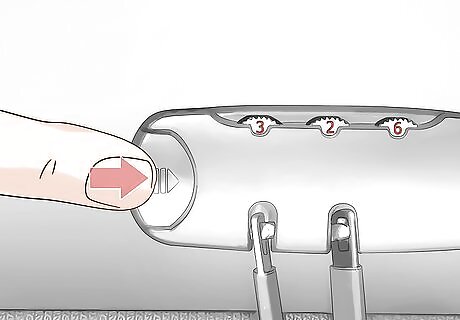
Push the button on the lock to put pressure on it. Depending on what type of lock you have, either slide the button to the open position or pull down on the lock itself like you’re trying to open it. This should put the mechanism into the “open” position on the inside, even though you can’t open it yet.
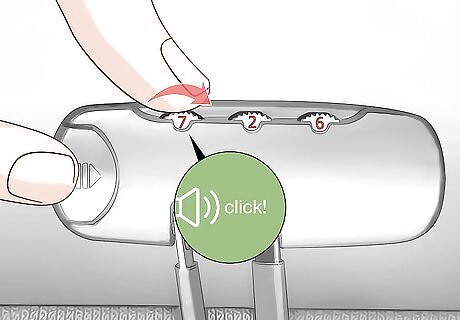
Spin the first number dial until you hear a click. Put your ear up next to the lock and spin the first number dial one number at a time. When you hear an audible clicking sound, leave the number in position. The noise may be very faint, so it’s best to work in a quiet environment without a ton of noise. If you go through all 10 numbers and you don’t hear a click, you may not be able to use this method on your lock.
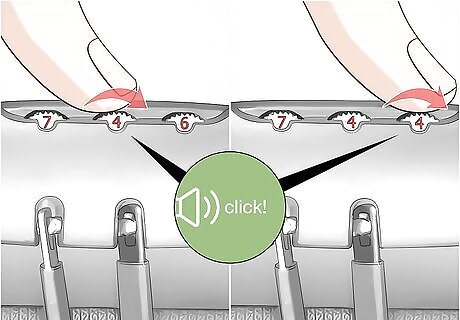
Rotate the second 2 dials until they click as well. Leave the first number in the position that you heard the click and move onto the second dial. Listen until you hear it click again, then move onto the third one. Make sure you leave the numbers that clicked in place so you continue working towards the correct combination.
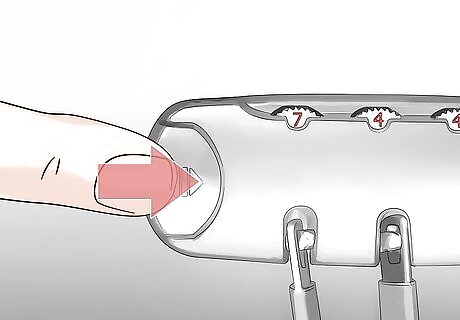
Slide the button on the lock to open it. Once you’ve found all 3 numbers, you should be able to pull your lock or slide the button to open it. Now you can write down the combination that the lock opened on so you don’t forget it. If the lock doesn’t open, try starting with the last number dial and working your way towards the first one instead. Using this technique can be kind of tough, especially if you’re in a noisy area. Don’t get discouraged if it doesn’t work for you.
Opening a Master Lock
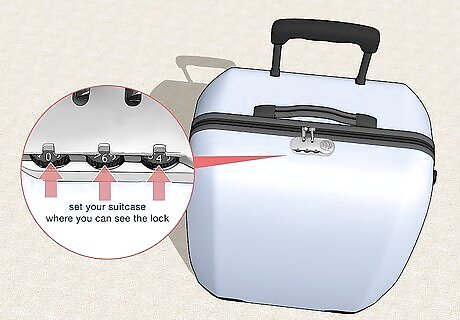
Set your suitcase on a flat surface. If your combination lock has an opening at the top where you can see the circles spin, set your suitcase upright so you can look into the holes at the top of the lock. Point a lamp or a flashlight at the suitcase so you can see into the lock. Some combination locks don’t have openings in the top where you can see the rotating circles. If yours doesn’t, you won’t be able to use this method. These combination locks usually have a plastic button on one side with the 3 number dials at the very top. The number dials have an opening where you can see the gears inside of the lock.

Rotate the numbers until you can see the empty spaces in the circles. Start spinning each number in a counterclockwise motion until you can see the divot in the side of the circles. It will be a fairly wide opening on each number, and you’ll be able to spot it easily. The normal surface of the circles has a groove in it. The opening will be flat around the edges and hollow in the center.

Spin the circles 2 positions clockwise. Once you’ve found the empty spaces in every circle, move each number dial 2 spaces in a clockwise turn. This will line the opening up with the lock mechanism on the inside of your lock so it can open. If you have a larger or older combination lock, you may need to turn your numbers more than twice. Keep turning each dial 1 position clockwise until you can slide the button to open it up.
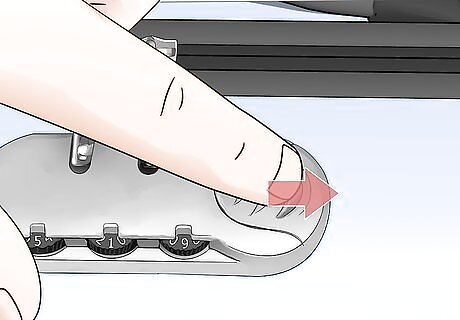
Slide the button to open the lock. Pull the button on the side of the lock to open up the mechanism on the inside. Now you can access your suitcase! If you meet any resistance when you open up your lock, you may need to spray some WD-40 into the mechanism to loosen it up.

Write down the combination so you don’t forget it. Take a look at what position the numbers on the lock are at to figure out the combination. Write them down or take a picture so you can remember the combination for next time.
Unlocking a TSA Lock
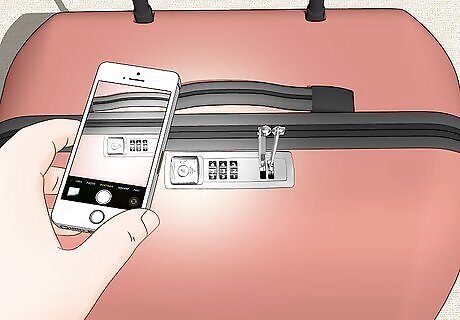
Shine a light on your combination lock. Set your suitcase somewhere that you have plenty of lighting. Grab a flashlight or the light from your phone and shine it directly onto the lock so you can see all the details. This technique works great for top-down combination locks that don’t have any openings where you can see the grooves in the number circles. These locks usually have a plastic or metal button on one side with the number dials in the very middle. They don’t have an opening in the lock where you can see the inside of the number dials.
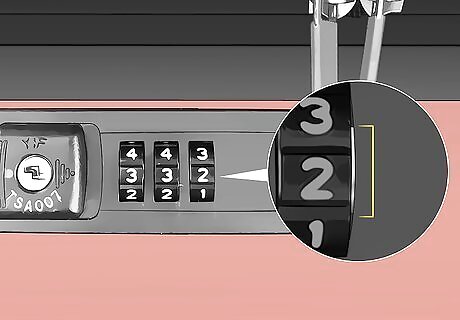
Look for the metal bracket on the side of each number circle. Using your light to see, look for the metal bracket on the right side of the number circle. Take note of how it looks smooth and without any grooves on each of your numbers. This metal piece is what rotates the number circles on the inside of the lock.
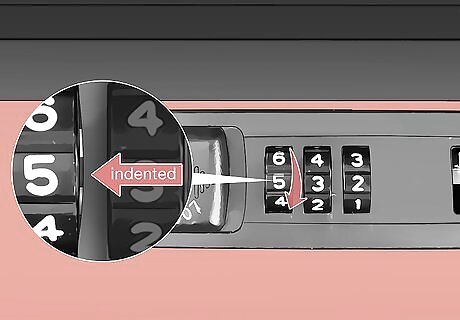
Spin the circle until you see an indent in the metal bracket. Click one of the circles into a new position one time to show the next number in the sequence. Take a look at the metal bracket to see if it’s indented. If it still looks smooth, keep clicking the numbers one by one until you see a small opening in the bracket. The indent won’t catch the light as well as the smooth sides, so it will be easier to see under a direct light. If you’re having trouble seeing the bracket, use the pointed end of a safety pin to poke into the bracket and feel the groove.
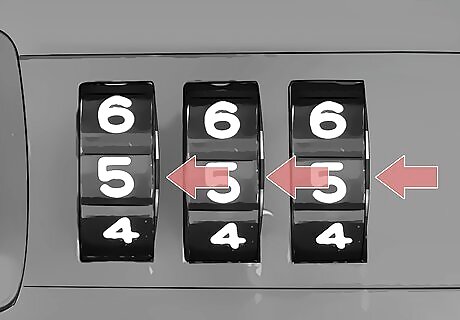
Rotate each circle until all of the indents face upwards. Now you can work on the other 2 number circles to find the indents in their brackets. Keep moving the numbers one by one until all of the indents in all 3 brackets face upwards toward you.

Spin each circle downwards 5 times. Moving each number circle one number at a time, rotate them each 5 different times so that the grooves lock into place. This will open up the mechanism on the inside of the lock so that you can open it. Now you can slide the button to open up the lock. Write down the combination so that you don’t forget it.


















Comments
0 comment